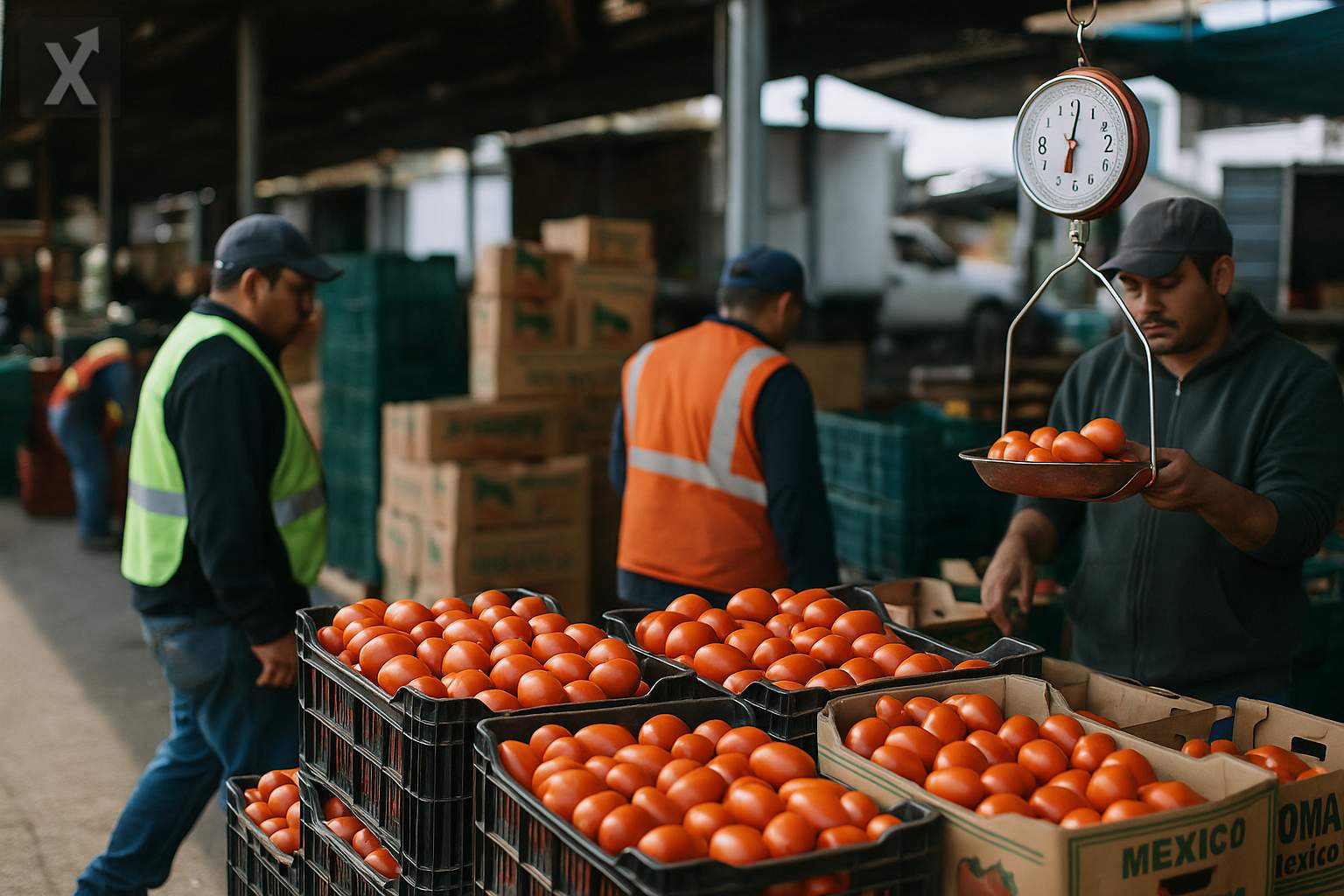Commercial Tensions Rise Between Mexico and the United States Over Tomato Tariff

The Mexican economy is facing a new source of pressure with the imminent imposition of a 20.91% antidumping tariff on fresh tomato exports to the United States. The deadline to reach an agreement that could prevent this measure is July 14, after which the tariff barrier will come into effect unless last-minute diplomatic or trade alternatives are found.
This situation was triggered when the Tomato Suspension Agreement ended in April, due to a decision by the U.S. Department of Commerce. Producers and lawmakers in Florida, backed by the Florida Tomato Exchange (FTE), have strongly pushed for the cancellation of previous agreements, arguing that the domestic market has been displaced by Mexican imports sold at unfair prices. U.S. producers claim they have lost significant market share, dropping from 80% to 30%, while Mexican growers have steadily increased their shipments of fresh tomatoes in recent years.
Dumping allegations—selling at prices below fair value—were recently validated by both the Department of Commerce and the U.S. International Trade Commission. Various U.S. tomato-producing states say they face much higher production costs than their Mexican counterparts, fueling current political and industry pressure to tighten antidumping measures. Republican lawmakers have stated there is no room for renegotiation and are demanding immediate implementation of the tariff.
On its part, Mexico is seeking a 90-day extension to allow more time for negotiations and to manage the impact on its producers. Mexican exporting associations argue that the tariff’s imposition will affect thousands of farmers, mainly in Sinaloa, Baja California, and San Luis Potosí, which together represent a fundamental part of the nation’s tomato production.
Tomatoes are one of the pillars of Mexico’s agri-food sector, with exports nearing $3.2 billion annually. Mexico supplies about 90% of the fresh tomatoes consumed north of the border. This trade dependency means that higher import costs will ripple throughout the supply chain—from producers and distributors to end consumers in the United States. According to estimates by the American Action Forum, prices are expected to rise by up to 11%, affecting both households and the food service and retail sectors in both countries.
Completely replacing Mexican supply in the U.S. would require expanding domestic tomato acreage by about 250,000 acres, casting doubt on the short-term feasibility of self-sufficiency. This process would require diverting resources, transforming agricultural infrastructure, and taking on significant logistical risks—not to mention the added pressure on price and supply stability in the U.S. market.
The imposition of such trade barriers could set a precedent for other Mexican agri-food exports, especially at a time when bilateral trade is not free of tensions over other agricultural and manufacturing issues. Without a negotiated solution, tomatoes could become the first link in a broader chain of frictions that may affect regional integration.
In summary, the tougher U.S. stance toward Mexican tomatoes is a challenge for regional economic integration and highlights the risks of relying on a single market for Mexico’s agri-food exports. With July 14 as the deadline, the outcome of these negotiations will be crucial for the stability of Mexican farmers and for commercial dynamics between both countries in the short and medium term.






